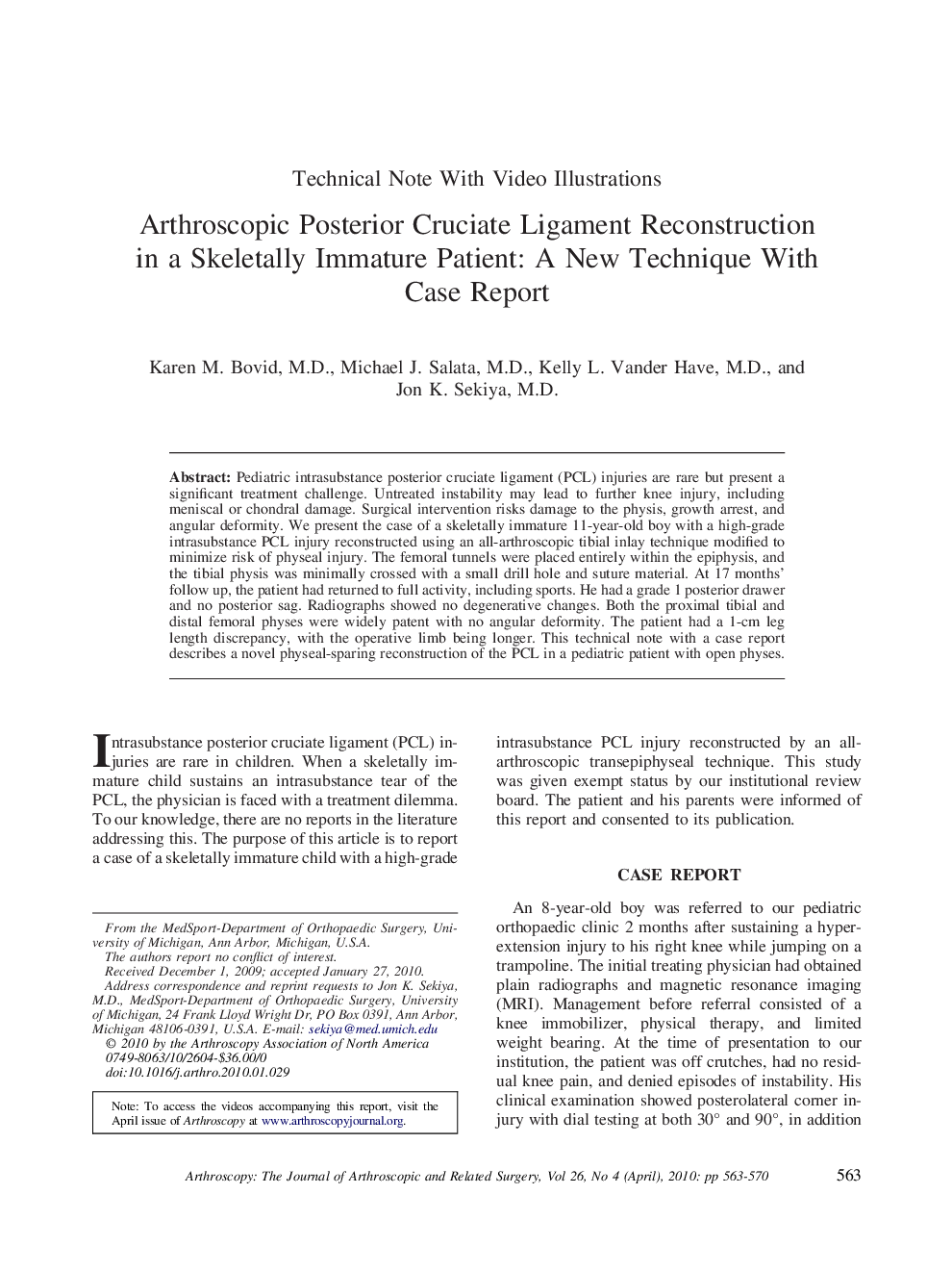| Article ID | Journal | Published Year | Pages | File Type |
|---|---|---|---|---|
| 4044511 | Arthroscopy: The Journal of Arthroscopic & Related Surgery | 2010 | 8 Pages |
Pediatric intrasubstance posterior cruciate ligament (PCL) injuries are rare but present a significant treatment challenge. Untreated instability may lead to further knee injury, including meniscal or chondral damage. Surgical intervention risks damage to the physis, growth arrest, and angular deformity. We present the case of a skeletally immature 11-year-old boy with a high-grade intrasubstance PCL injury reconstructed using an all-arthroscopic tibial inlay technique modified to minimize risk of physeal injury. The femoral tunnels were placed entirely within the epiphysis, and the tibial physis was minimally crossed with a small drill hole and suture material. At 17 months' follow up, the patient had returned to full activity, including sports. He had a grade 1 posterior drawer and no posterior sag. Radiographs showed no degenerative changes. Both the proximal tibial and distal femoral physes were widely patent with no angular deformity. The patient had a 1-cm leg length discrepancy, with the operative limb being longer. This technical note with a case report describes a novel physeal-sparing reconstruction of the PCL in a pediatric patient with open physes.
